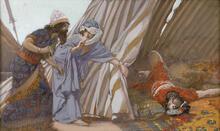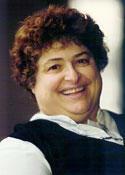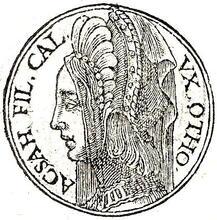Rahab: Bible
Before the Israelites cross the Jordan, Joshua sends men to scout out the land. Arriving in Jericho, they decide to spend the night at the house of the prostitute Rahab. When Jericho’s ruler tries to apprehend them, Rahab hides them and then helps them escape through the window, thus saving their lives. In return, she and her household are spared the destruction of Jericho and become part of the people Israel. Using the window gives a positive spin to a biblical window motif that casts a negative light on other biblical women. In saving the spies, Rahab she acts as head of her household. She also functions as a prophetic voice anticipating Israel’s occupation of the land.
Rahab Saves the Spies and Saves Her Family
A Canaanite woman living in Jericho, Rahab is a prostitute who is also a biblical heroine. According to the narrative in Joshua 2, before the conquest of Canaan, Joshua sends two men as spies to see the land. They come to Rahab’s house for lodging, information, and/or sex. The king, hearing about the two men, demands that Rahab give them up. Like the midwives in Egypt, Rahab is faced with a “moment of truth.” Like them, Rahab defies the ruler and rescues the Israelites. She tells the king’s men that the two men have left and that the king’s men should chase them. Meanwhile, she has hidden the men under the flax drying on her roof (2:4); the writer uses the unusual word tizpeno, “she hid him” (even though there are two men), perhaps as an allusion to Exod 2:2, where Moses’s mother hides her newborn (tizpenehu). Rahab is midwife and mother to Israel in its beginnings in Canaan.
Rahab lets the two men out through her window, which is in the town wall. She requests a return for her act of ḥesed (NJPS, “I have shown loyalty”). She asks that she and her family be spared once the Israelites attack Jericho. The spies give her a crimson thread to hang from her window, with the injunction that she is to gather her family and wait inside her house; as long as they stay indoors, they will be spared. When the Israelites destroy Jericho, as described in Joshua, Rahab and her whole extended family indeed escape doom by waiting inside a house marked with a red thread, just as the Israelites who stayed in houses marked with the blood of the paschal lamb were spared the fate of the Egyptians. They are exempted from the ḥerem, Israel’s obligation to destroy all Canaanites (see 6:17), and are brought out of the city to live among the Israelites (6:25). Rahab and her family are a new Israel.
Rahab and the Window
The word for “window” appears three times in the Rahab narrative (Josh 2: 15, 18, 21) when she helps the men escape and marks her house so it will be spared destruction. Windows have a prominent role in the stories of several other biblical women: Michal (2 Sam 6:16), the mother of Sisera (Judg 5:28 -31), and Jezebel (2 Kgs 9:30). All these women are looking through their palace windows, separated from the scenes they witness or hope to witness. The window motif accentuates the aloofness of these elite women, who are removed from the real world outside the window. In contrast, Rahab is an active and involved user of the window, which becomes a vehicle of her communication with and connection to the outside world.
Rahab’s Social and Prophetic Role
Rahab is the head of her household, which was not only a dwelling but also a social unit. The extended family in her household consists of her parents, siblings, and “all who belong” to her parents and siblings (2:13, cf. 2:18; 6:22-23), presumably nieces and nephews and possibly servants. The household was the most numerous unit of society in ancient Israel. As such, it was the foundational building block of the sociopolitical structure. When Rahab and her family survive the conquest of Jericho, they thereby become part of the nation Israel, a system of tribes not city states (like Jericho). Her household as the site of female authority (cf. the household of the Shunammite woman in 2 Kings 4) is incorporated into the new sociopolitical order.
Rahab has a special function in the biblical narratives of Israel’s existence in the land. When uncovering the men, she explains that she knows that God will give Israel the land (2:8). She has heard about the events of the Sea of Reeds (Red Sea) and the defeat of the Amorite kings Og and Sihon, and she declares (quoting from the Song of Miriam in Exodus 15; see v. 11) that “dread” has fallen on the inhabitants and that they all “fear” Israel (2:9). This is the message that the men bring back to Joshua. Rahab is thus the oracle, or prophet, of Israel’s occupation of the land. Another woman, the prophet Deborah, announced a major victory in the taking of Canaan; and the end of Israel’s occupation of the land is pronounced by yet another woman, the prophet Huldah (2 Kgs 22:14–21). Rahab, who begins as triply marginalized—Canaanite, woman, and prostitute—moves to the center as bearer of a divine message and herald of Israel in its new land. Even though later generations of readers have been squeamish about her occupation, preferring to think of her as an “innkeeper,” she is remembered in Jewish tradition as the great proselyte, as ancestress of kings and prophets, and, in the New Testament, as ancestress of Jesus (Matt 1:5).
Last Updated January 5, 2021. https://thetorah.com/article/looking-through-the-window-a-gendered-motifFrymer-Kensky, Tikva. “Reading Rahab.” In Tehillah Lemoshe: Biblical and Judaic Studies in Honor of Moshe Greenberg, edited by Mordechai Cogan, Barry Eichler, and Jeffrey Tigay, 57–72. Winona Lake, Indiana: Eisenbrauns, 1997.Frymer-Kensky, Tikva. “The Guardian at the Door: Rahab.” In Reading the Women of the Bible, 34-44. New York: Schocken Books 2002.Havrelock, Rachel. “Home at Last: The Local Domain and Female Power.” In The Bible and Feminism: Remapping the Field, edited by Yvonne Sherwood. 240–260. Oxford: Oxford University Press, 2017.








